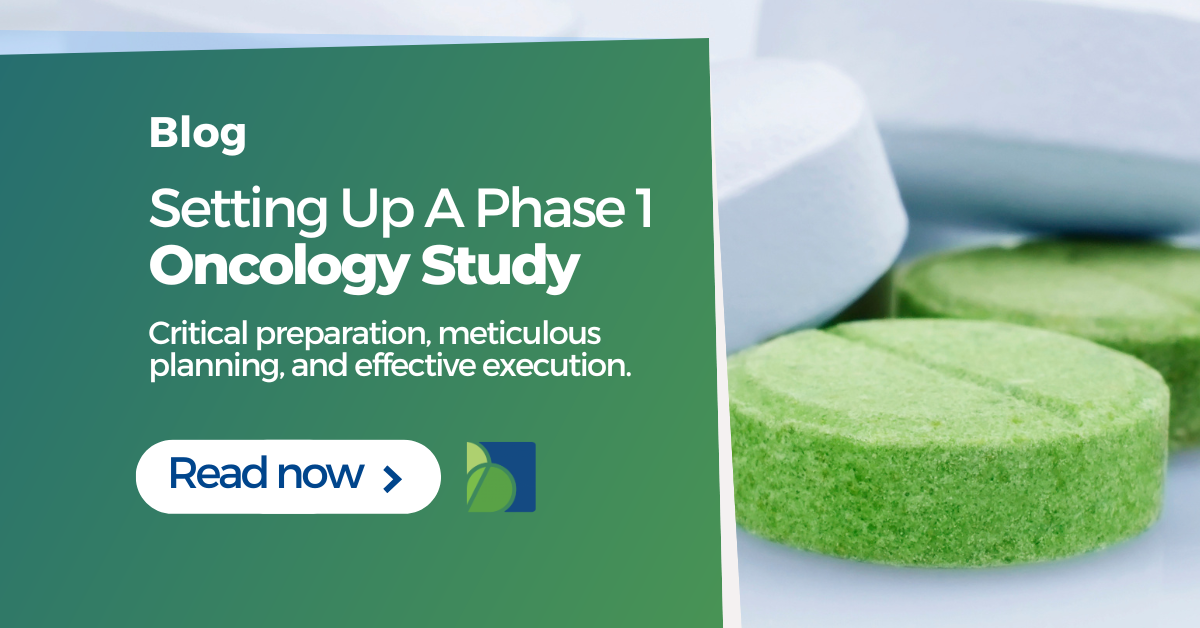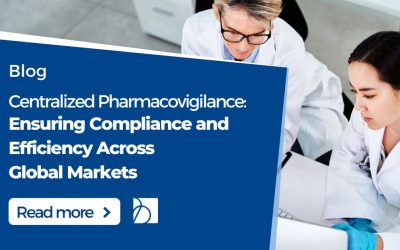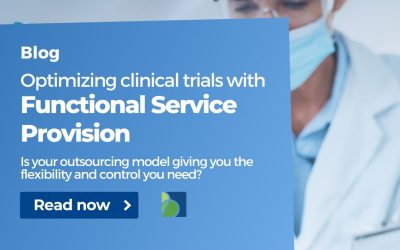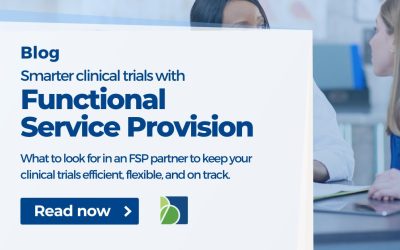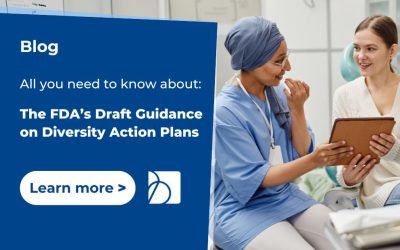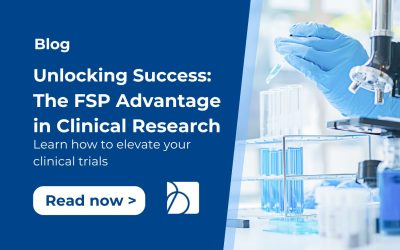Cancer remains one of the most formidable challenges in modern healthcare, necessitating relentless research and clinical trials. In this context, Phase 1 Oncology Studies are the cornerstone of cancer treatment development. They provide the earliest examination of new human treatments, setting the stage for the rest of the development process. Oncology studies, in their essence, are the bedrock of cancer care. They underpin scientific discoveries, translate laboratory findings into viable treatments, and create hope for millions of patients worldwide.
Understanding Phase 1 Trials
Phase 1 trials represent the first stage of clinical testing in humans. Their primary objective is to assess a drug’s safety profile, determine the appropriate dosage, and identify potential side effects. The risks and benefits of Phase 1 trials are intertwined. While they carry inherent risks due to the experimental nature of the drugs, they also offer the possibility of access to potentially effective therapies not yet available to the general public.
The Strategic Blueprint of a Phase 1 Oncology Study
Crafting a Phase 1 Oncology Study plan isn’t just about connecting the dots; it’s about drawing the precise lines in the proper sequence. It’s a venture requiring precision, a deep domain understanding, and seamless coordination among all involved parties. Let’s unpack the critical aspects that make up this blueprint:
Setting the Compass – Establishing Objectives:
The objectives set the compass for your study. They act as the guiding star, directing the entire course of the study. The mainstay of a Phase 1 Oncology Study is to evaluate the safety profile of a new drug, delineate its optimal dosage, and chart its side effects. Complementary objectives may probe into the drug’s efficacy and pharmacokinetic properties, shedding light on how the body absorbs, distributes, metabolizes, and excretes it.
Designing the Blueprint – Defining the Study Design:
The design is the study’s backbone, outlining its anatomy and physiology. It encompasses participant numbers, drug administration frequency and dosage, data collection modalities, and outcome assessment methods. The design, reflecting the study’s objectives and the investigational drug’s nature, might take various shapes – from dose-escalation to dose-expansion models.
Building the Team – Assembling the Study Team:
A formidable team is the study’s engine, propelling it forward. This crew, comprising seasoned oncologists, nimble research nurses, skilled pharmacists, sharp data analysts, and meticulous regulatory affairs specialists, is the heart of a successful study. Ensuring each member is equipped with the relevant expertise and training is crucial to perform their roles effectively.
Ensuring Continuity – Risk Management Plan:
Managing risks is akin to having an insurance policy for the study. It involves recognizing potential hazards and devising strategies to counteract them. This could involve creating robust systems for data security, participant confidentiality, emergency response, and pharmacovigilance.
Planning a Phase 1 Oncology Study is akin to a well-conducted symphony, where each element plays a critical note. The intensity of the planning phase carves the path for the entire study, ascertaining that it is scientifically robust, ethically sound, and yields valid, impactful data. The mantra is clear: Plan meticulously, plan for success.
Read this article for more information on ‘Clinical Trial Design For Early Phase Oncology Studies‘.
Preparing for your early phase oncology trial
Having navigated the planning process and assembled a devoted team, it’s time to delve into the action. The moment to transform diligent planning into meaningful preparation is now.
- Preclinical Testing
The journey begins with preclinical testing, a rigorous stage where the investigational drug is assessed under controlled laboratory conditions and animal studies. We focus on discerning its impact on cancer cells, its overall safety profile, and its potential dosage range. It’s a critical phase; the collected data informs the Phase 1 trial’s design and justifies the investigational drug’s progression into human trials.
- Preparation of the Investigational New Drug (IND) Application
Following successful preclinical testing, the next step is to assemble an Investigational New Drug (IND) application. This document encapsulates all relevant information about the drug and the proposed study. It includes the preclinical testing data, Phase 1 trial plans, manufacturing information related to the drug, and qualifications of the investigators. The IND is a cornerstone for regulatory authorities to assess the trial’s safety and viability.
- Obtaining Regulatory Approval
The IND application is then submitted to the regulatory authority. In the United States, for instance, this would be the Food and Drug Administration (FDA). Here, the IND undergoes meticulous examination to ensure the proposed trial’s safety and the study design’s appropriateness. It’s a detailed process, often requiring months of iterative communication between the drug developers and the regulatory body.
- Ethics Review & Approval
Navigating the regulatory and ethical landscape is a prerequisite for the study’s launch. Ensuring your study stands up to the scrutiny of regulatory authorities and ethics committees is a mandate and a testament to the study’s integrity and commitment to participant welfare.
Alongside regulatory scrutiny, an independent ethics committee or Institutional Review Board (IRB) reviews and approves the trial protocol. The IRB’s fundamental role is to affirm the study’s ethical integrity, ensuring that the potential benefits justify the risks and that participants’ rights and welfare will be unequivocally safeguarded.
- Protocol Development
A detailed protocol is the study’s road map. A sturdy protocol promotes consistency and elevates the quality of the study, serving as the operational manual for investigators and clinical staff. While awaiting regulatory and ethical approval, the research team usually finalizes the clinical trial protocol. This document is a comprehensive guide detailing the trial’s objectives, design, target patient population, eligibility criteria, procedural blueprint, data collection methodologies, and data analysis techniques.
- Team Training
Every investigator and clinical staff member involved in the study receive extensive training on the trial protocol and Good Clinical Practice (GCP) guidelines. This crucial stage ensures the trial’s ethical and regulatory compliance while emphasizing safety and reliability.
- Patient Recruitment Planning
A detailed protocol is the study’s road map. This comprehensive document houses the study’s design, objectives, eligibility criteria, procedures, drug information, and data analysis plans. A sturdy protocol promotes consistency and elevates the quality of the study, serving as the operational manual for investigators and clinical staff.
This preparatory phase also includes the development of a strategic patient recruitment plan. This approach outlines the procedures for identifying eligible participants, providing trial information, and obtaining informed consent.
This article discusses ‘Improving Patient Recruitment in Early Phase Oncology Trials‘.
The preparatory steps for a Phase 1 Oncology Study are rigorous and detailed, embodying a collaborative effort among various stakeholders to ensure the trial’s scientific, ethical, and regulatory soundness.
Conducting a Phase 1 Oncology Study
After months, maybe even years, of meticulous planning and tireless preparation, the moment has finally arrived. The blueprints are in place, the protocol finalized, the team assembled, and the necessary approvals obtained. It’s time to roll up your sleeves and leap into action. Every moment of hard work put in now lays the groundwork for potentially game-changing advances in cancer treatment. Let’s get started on turning scientific hypotheses into tangible results.
- Participant Recruitment
Recruiting participants is an intricate process, where the key lies in establishing stringent eligibility criteria. The selected criteria aim to minimize potential risks to participants and maximize the relevance and applicability of the collected data. This might involve considering factors such as the type and stage of cancer, previous treatments, overall health status, and demographic variables. The ultimate goal is to ensure the study is conducted on a representative group for whom the investigational drug is intended.
- Study Implementation
The study implementation is a dynamic process, requiring meticulous planning and monitoring. It begins with the administration of the investigational drug to participants. Throughout the study, participants are closely monitored for side effects; a process often referred to as pharmacovigilance. Based on the observed drug effects, dosages may be adjusted as needed to ensure safety. This phase requires a high level of coordination among clinicians, nurses, pharmacists, and other healthcare professionals involved in patient care.
- Safety Monitoring in Phase 1 Oncology Studies
The safety of participants is the topmost priority in any clinical trial. In Phase 1 Oncology Studies, Data Safety Monitoring Boards (DSMBs) are crucial. DSMBs are independent groups of experts who regularly review and evaluate safety data collected during the trial. They are responsible for making recommendations regarding the continuation, modification, or termination of the study, providing additional protection for participants.
- Data Collection and Analysis
Data collection is an ongoing process throughout the trial, with researchers meticulously tracking and documenting various types of information. This includes physiological measurements, side effects, adverse events, and participant responses to the drug. The collected data is then analyzed to guide dosage adjustments, monitor side effects, and glean initial insights into the drug’s effectiveness. The goal here is to ensure the safety of participants while also exploring potential signs of the drug’s efficacy.
- Interpreting the Results of a Phase 1 Oncology Study
Upon the study’s conclusion, researchers set out to interpret the results. This involves a comprehensive analysis to evaluate the drug’s safety, determine its maximum tolerated dose (MTD), and identify any potential signs of efficacy. The MTD is the highest drug dose that does not cause unacceptable side effects. The process may also involve statistical analyses to identify trends and patterns, providing valuable insights that shape the drug’s development.
Learn more about ‘Managing An Early Phase Oncology Trial‘ from a Project Manager’s perspective.
Moving Forward after a Phase 1 Oncology Study
If the investigational drug demonstrates a good safety profile and shows potential signs of effectiveness, it then progresses to Phase 2. In this phase, the drug’s efficacy and side effects are studied in a larger patient population. Here, the drug is tested for its ability to produce the desired therapeutic effect while the safety monitoring continues. The transition from Phase 1 to Phase 2 is a significant milestone, marking the shift from an initial focus on safety to a more pronounced focus on efficacy.
Each step plays a critical role in completing a Phase 1 Oncology Study and forms the foundation for the following stages of clinical research.
Challenges can range from logistical issues, such as participant recruitment, to scientific obstacles, like unanticipated side effects or less-than-expected efficacy.
Learn more about the hurdles you might come across in our blog on the ‘Challenges in clinical development for oncology trials‘.



